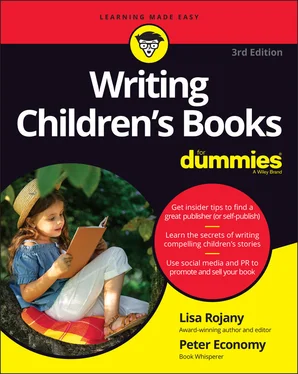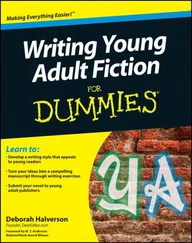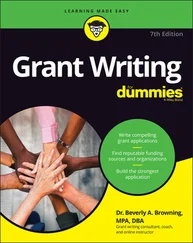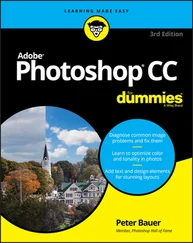Peter Economy - Writing Children's Books For Dummies
Здесь есть возможность читать онлайн «Peter Economy - Writing Children's Books For Dummies» — ознакомительный отрывок электронной книги совершенно бесплатно, а после прочтения отрывка купить полную версию. В некоторых случаях можно слушать аудио, скачать через торрент в формате fb2 и присутствует краткое содержание. Жанр: unrecognised, на английском языке. Описание произведения, (предисловие) а так же отзывы посетителей доступны на портале библиотеки ЛибКат.
- Название:Writing Children's Books For Dummies
- Автор:
- Жанр:
- Год:неизвестен
- ISBN:нет данных
- Рейтинг книги:4 / 5. Голосов: 1
-
Избранное:Добавить в избранное
- Отзывы:
-
Ваша оценка:
- 80
- 1
- 2
- 3
- 4
- 5
Writing Children's Books For Dummies: краткое содержание, описание и аннотация
Предлагаем к чтению аннотацию, описание, краткое содержание или предисловие (зависит от того, что написал сам автор книги «Writing Children's Books For Dummies»). Если вы не нашли необходимую информацию о книге — напишите в комментариях, мы постараемся отыскать её.
Writing Children’s Books For Dummies,
For Dummies
Writing Children’s Books For Dummies
Writing Children's Books For Dummies — читать онлайн ознакомительный отрывок
Ниже представлен текст книги, разбитый по страницам. Система сохранения места последней прочитанной страницы, позволяет с удобством читать онлайн бесплатно книгу «Writing Children's Books For Dummies», без необходимости каждый раз заново искать на чём Вы остановились. Поставьте закладку, и сможете в любой момент перейти на страницу, на которой закончили чтение.
Интервал:
Закладка:
Improving Your Chances of Getting Published
We’ve worked in the publishing industry for a long time, and we have a pretty good idea of what works and what doesn’t. Here are some insider tips that can significantly improve your chances of getting published. Some of these tips involve very specific advice, such as getting feedback before submitting; others provide less concrete (but just as important) tips about the etiquette of following up with publishers and how to behave if rejected:
Act like a pro. If you act like you’re an experienced and savvy children’s book writer, people perceive you as being an experienced and savvy children’s book writer — provided you’ve really done your research. The children’s book industry tends to be more accepting of those people who already belong to the club, so to speak, as compared to the newbies pounding on the door to be let in. So you can greatly improve your chances of getting published if you behave like you already belong. Some examples of putting yourself out there as a pro include sending a one-page query letter that addresses all the salient points, submitting your carefully and thoroughly edited manuscript, and formatting your manuscript properly. (All of these tips are discussed in Chapters 14and 18).
Create magic with words. Writing a fabulous children’s book isn’t easy. A children’s book editor has a very finely tuned sense of what constitutes a well-written book and what will sell in the marketplace. If you want to get your book published, your writing must be top notch — second best isn’t good enough. If you’re still learning the craft of writing, by all means get some reliable and knowledgeable feedback. Check out other writers’ guides, as well. And you might even choose to engage the services of a professional children’s book editor or book doctor to help fix up your manuscript before you submit it to an agent or publisher for consideration. Whichever avenue(s) you choose, the goal is putting your best effort forward.
Research thoroughly. To get published, your book needs to be both believable and factually correct (especially if you’re writing nonfiction). If you’re sloppy with the facts, your editor won’t waste much time with your manuscript before deleting it from their inbox. ( Chapter 7keeps you up on the latest developments in the world of children and ways to research your topic.)
Follow up — without stalking. After you submit your manuscript or proposal, you might want to follow up with the agent or editor to whom you submitted it. Sometimes, however, you actually need to avoid a follow-up. Many publishers and agents now reply to a query with the admonition that if they don’t get back to you within three to six months, you can assume that they have rejected your work. Keep in mind that agents and editors are very busy people, and they probably receive hundreds, if not thousands, of submissions every year. Be polite, but avoid stalking the agent or editor by constantly calling or e-mailing for the status of your submission. Making a pest of yourself buys you nothing except a one-way ticket out of the world of children’s books. See Chapter 18for more on when and how to follow up.
Accept rejection graciously. Every children’s book author — even the most successful and famous — knows rejection and what it’s like to wonder whether their book will ever get published. But every rejection provides you with important lessons that you can apply to your next submission. Take these lessons to heart and move on to the next opportunity. Head to Chapter 18for more on dealing with rejection.
Practice until you’re perfect. You can’t find a better way to succeed at writing than to write, and you can’t get better at submitting your manuscripts and proposals to agents or publishers unless you keep trying. Don’t let rejection get in the way of your progress; keep writing and keep submitting. The more you do, the better you’ll get at it — it being the elements of the writing process itself, which we discuss in Parts 2and 3of this book. And remember: Hope means always having a manuscript being considered somewhere.
Promote like crazy. Publishers love authors with a selling platform —defined as the ability to publicize, promote, and sell their books as widely as possible. By showing your prospective publishers that you have the ability to promote and sell your books — via social media; by way of workshops or speaking engagements, in traditional media such as radio, TV, and local newspapers; through your networks of relationships; and more — you greatly increase your chances of being published. (For more on promotion, see Chapters 21and 22.)
Give back to the writing community. Both beginners and pros give back to their profession, to their readers, and to their communities. They volunteer to participate in writing groups or conferences to help new or unpublished authors polish their work and get published; they do free readings in local schools and libraries; and they advocate for children in their communities. When you give back like a pro, you improve your standing in the children’s book industry, increasing your chances of getting published. And besides all that, you establish some good karma — and that can’t hurt.
Chapter 2
Delving into Children’s Book Formats
IN THIS CHAPTER
 Breaking down the parts of a book
Breaking down the parts of a book
 Looking into the many children’s book categories and formats
Looking into the many children’s book categories and formats
 Using few words to tell a story in picture books
Using few words to tell a story in picture books
 Keeping readers engaged in books without pictures
Keeping readers engaged in books without pictures
Children are as different as the many different books catering to their many different interests and desires. Because of this, children’s books offer a wealth of diversity in formats, shapes, sizes, and intended audiences. In this chapter, we explain the different formats that children’s books can fall into. We also show you a lot of examples of book covers so that you can get a feel for successful and representative formats that sell in various channels of the children’s book market. In Chapter 3, we talk about genres, another way to group children’s books. Each genre has its own conventions that you must address, as well.
Dissecting the Anatomy of a Book
Before we go dropping a lot of terminology on you, we want you to know the most basic parts of a book. If you at least kind of recognize these terms, you can more easily communicate about your book to other publishing professionals:
Cover: The face your book presents to the world after it’s published. You can have a hardcover book (also known as a hardback ), meaning it has paper glued over hard cardboard on three sides (front cover, back cover, and spine); or you might have a softcover book (also known as a paperback ), meaning it has thick bond cardstock paper for all three sides. You can also have paper over board. Hardcover: You call a hardcover book’s cover its case. The case is often one solid color that has the front cover and spine stamped with the name of the book and author. The jacket is a sheet of paper that wraps around this case and has some sort of illustration, depending on the format. Softcover: A softcover book’s front cover usually features the title, the author’s name, the illustrator’s name, and some graphic image. The back cover can include sell copy (words that describe what the book is about in brief and why it’s so great), the publisher’s name, copyright info, a barcode, a price, and other information that helps retailers categorize and sell it. Paper-over-board: When a hardcover book cover doesn’t have a jacket and looks more like a softcover book cover, it’s called a paper-over-board book. The paper is wrapped around and secured to the cardboard without a jacket covering it. ( Note: For many board books and novelty books, the text and images begin right away on the inside front cover.)
Читать дальшеИнтервал:
Закладка:
Похожие книги на «Writing Children's Books For Dummies»
Представляем Вашему вниманию похожие книги на «Writing Children's Books For Dummies» списком для выбора. Мы отобрали схожую по названию и смыслу литературу в надежде предоставить читателям больше вариантов отыскать новые, интересные, ещё непрочитанные произведения.
Обсуждение, отзывы о книге «Writing Children's Books For Dummies» и просто собственные мнения читателей. Оставьте ваши комментарии, напишите, что Вы думаете о произведении, его смысле или главных героях. Укажите что конкретно понравилось, а что нет, и почему Вы так считаете.











